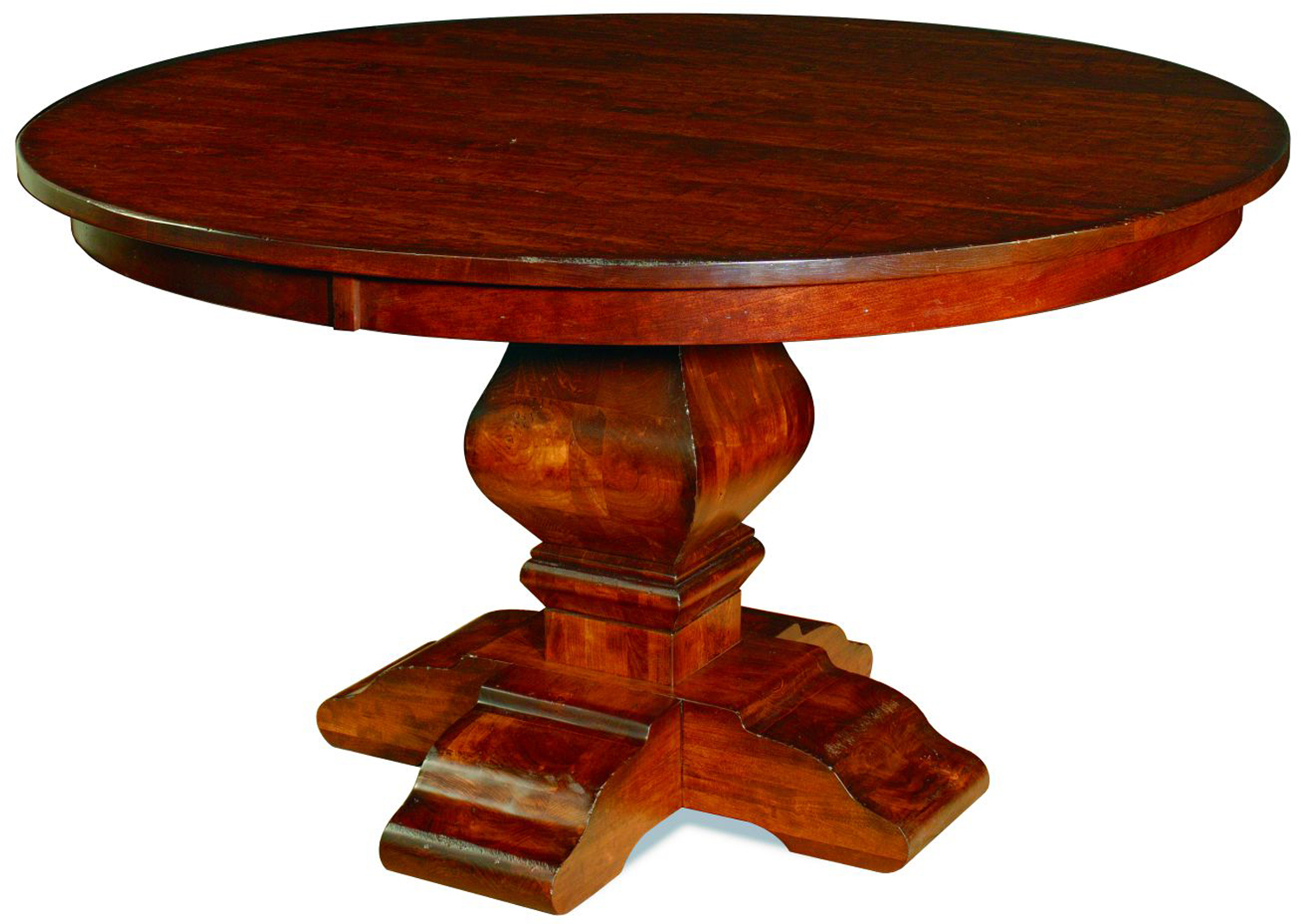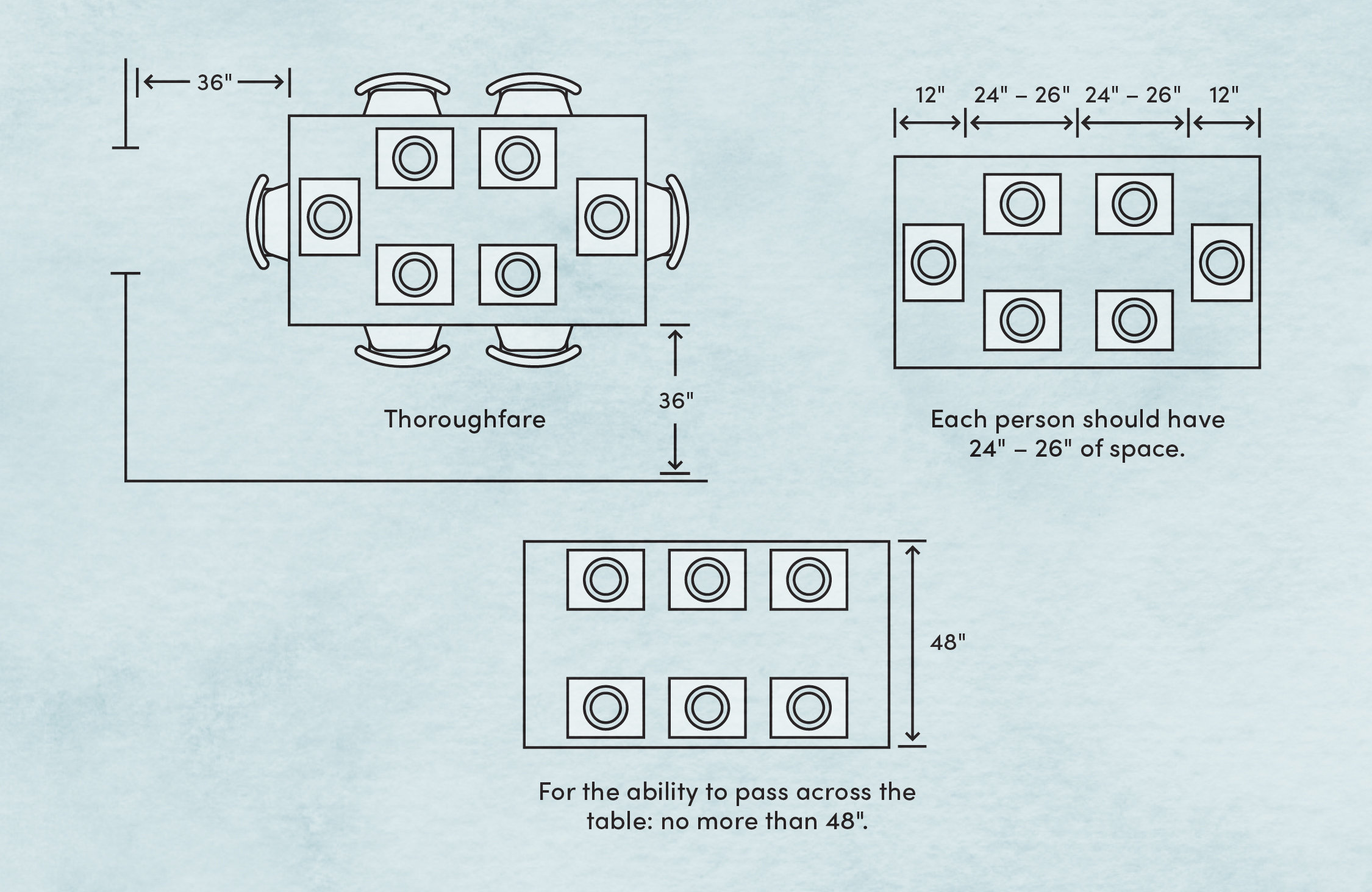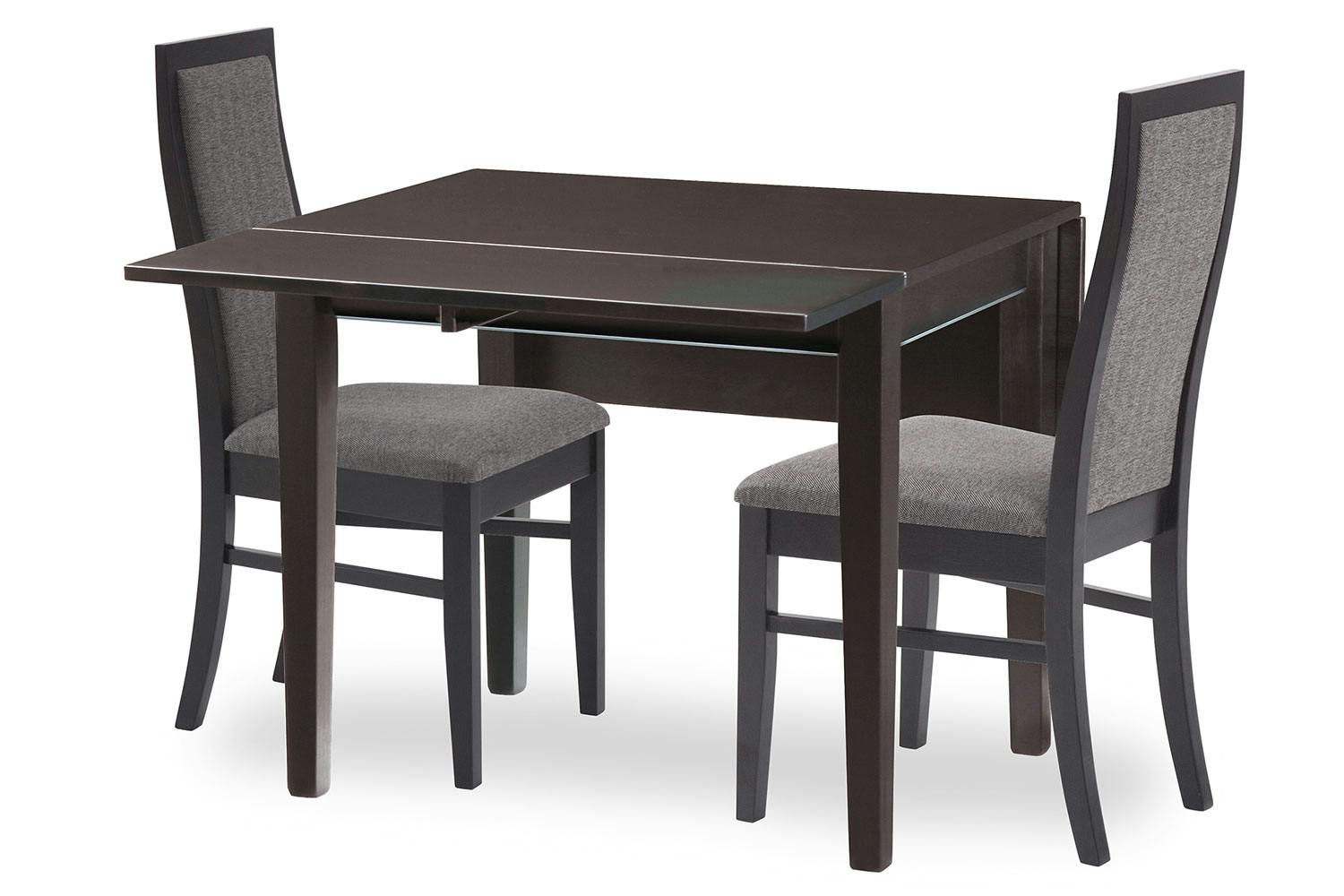When it comes to the dining room, the centerpiece of the space is often the dining room table. It's where we gather with loved ones to share meals, conversations, and create memories. But in order to fully enjoy this space, it's important to have the right amount of space for your dining room table. Here's a guide to help you determine the right amount of space needed for your dining room table.Space Requirements for Dining Room Table
The amount of space needed for a dining room table depends on several factors, such as the size and shape of the table, the number of people using it, and the layout of your dining room. A general rule of thumb is to have at least 36 inches of space between the edge of the table and the nearest wall or furniture. This allows for comfortable movement around the table and chairs.How Much Space Do You Need for a Dining Room Table?
To determine the optimal space for your dining room table, take into consideration the size and shape of your table. A rectangular table typically requires more space than a round or square table. For rectangular tables, allow for a minimum of 42-48 inches of space around the table to ensure enough room for chairs to be pulled out and for people to move around freely. For round tables, aim for at least 36 inches of space between the table and the nearest wall or furniture. This will provide enough room for chairs to be pushed back without hitting anything and for people to comfortably move around. Square tables can vary in size, but it's recommended to have at least 36 inches of space around the table to ensure enough room for chairs and movement.Optimal Dining Room Table Space
Aside from the size and shape of your dining room table, the number of people using it is also a crucial factor in determining the space needed. As a general rule, allow for 24 inches of table space per person. This means that a 6-foot rectangular table can comfortably seat 6 people, while a 4-foot round table can accommodate 4 people. Another important factor to consider is the placement of your table. If it's against a wall, you can save space by pushing the table closer to the wall, but make sure to allow enough room for chairs to be pulled out. If your table is in the center of the room, make sure to leave enough space for people to walk around and to avoid a cramped and cluttered feel.Calculating Space Needed for Dining Room Table
When choosing the right size dining room table for your space, it's important to consider not just the size and shape of the table, but also the overall layout of your dining room. If you have a small dining room, opt for a smaller table or consider an extendable table that can be adjusted for more guests when needed. For larger dining rooms, you have more flexibility in choosing a larger table or even a combination of multiple tables. Also, consider the style of your dining room. A sleek and modern table may require less space than a chunky, rustic table. Take into account the chairs as well, as bulky chairs may require more space to move around.Determining the Right Size Dining Room Table for Your Space
If you have a small dining room or limited space, there are plenty of space-saving dining room table options available. Some options include drop-leaf tables, which can be folded down when not in use, wall-mounted tables, and nesting tables that can be stacked and stored away when not needed. Another option is to choose a table with a smaller footprint, such as a round or square table, or a pedestal table that doesn't have legs that take up space. You can also consider a bench-style seating instead of individual chairs to save space.Space-Saving Dining Room Table Options
An expandable dining room table is a great option for those who have limited space but occasionally need to entertain more guests. These tables can be extended or adjusted to accommodate more people when needed and can be retracted to save space when not in use. There are various types of expandable tables, such as drop-leaf tables, butterfly leaf tables, and extension tables. Choose one that suits your space and needs best.Maximizing Space with an Expandable Dining Room Table
If you have a small dining room, it's important to maximize the space and make it functional. This can be achieved through smart furniture choices, such as choosing a table with built-in storage or a table that can be used for multiple purposes, such as a desk or kitchen island. You can also consider using folding chairs that can be stored away when not in use, or opting for a bench instead of individual chairs to save space. Utilize the walls and vertical space by adding shelves or a wall-mounted bar for extra storage and functionality.Creating a Functional Dining Room with Limited Space
To ensure the perfect fit for your dining room table, it's important to measure your space accurately. Measure the length and width of your dining room, taking into consideration any obstructions such as doors, windows, or other furniture. Once you have the measurements, you can use them to determine the space needed for your table and make an informed decision on the size and shape of your dining room table.Measuring Your Dining Room for the Perfect Table Fit
Aside from choosing the right size and style of your dining room table, there are other ways to save space in a small dining room. Opt for a light color palette to create an illusion of more space. Use mirrors to reflect light and make the room feel bigger. Choose furniture with a smaller footprint and avoid bulky pieces that can take up unnecessary space. Keep the room clutter-free and utilize storage solutions to keep items out of sight. These simple tips can help create a functional and spacious dining room, even in a small space. In conclusion, the amount of space needed for a dining room table depends on various factors, but the general rule is to have at least 36 inches of space around the table for comfortable movement and functionality. Consider the size and shape of your table, the number of people using it, and the layout of your dining room when determining the right amount of space needed for your dining room table. With the right measurements and space-saving tips, you can create a perfect dining room that suits your needs and space. Space-Saving Tips for Small Dining Rooms
The Importance of Consideration in Choosing the Right Dining Room Table Size

Personal Preference and Lifestyle Factors
 When it comes to designing the perfect dining room, it is important to consider the size of the dining table. The dining table is not only a functional piece of furniture, but it also serves as the centerpiece of the room. Choosing the right size dining table is crucial for both aesthetic and practical reasons.
Space needed for dining room table
is a major consideration in
house design
, as it can greatly affect the overall flow and functionality of the room. One must also take into account their personal preferences and lifestyle factors when deciding on the size of their dining table.
When it comes to designing the perfect dining room, it is important to consider the size of the dining table. The dining table is not only a functional piece of furniture, but it also serves as the centerpiece of the room. Choosing the right size dining table is crucial for both aesthetic and practical reasons.
Space needed for dining room table
is a major consideration in
house design
, as it can greatly affect the overall flow and functionality of the room. One must also take into account their personal preferences and lifestyle factors when deciding on the size of their dining table.
Seating Capacity and Room Size
 The first step in determining the right dining table size is to consider the number of people you want to accommodate. If you frequently host large gatherings or have a big family, a larger table is necessary. On the other hand, if you have a small family or often dine alone, a smaller table may suffice.
Seating capacity
is a key factor when choosing the right dining table size. It is recommended to have at least 24 inches of table width per person for comfortable seating. Additionally, the size of the room itself should also be taken into account.
Space constraints
in smaller rooms may require a smaller dining table, while larger rooms can accommodate bigger tables.
The first step in determining the right dining table size is to consider the number of people you want to accommodate. If you frequently host large gatherings or have a big family, a larger table is necessary. On the other hand, if you have a small family or often dine alone, a smaller table may suffice.
Seating capacity
is a key factor when choosing the right dining table size. It is recommended to have at least 24 inches of table width per person for comfortable seating. Additionally, the size of the room itself should also be taken into account.
Space constraints
in smaller rooms may require a smaller dining table, while larger rooms can accommodate bigger tables.
Functionality and Design
 Aside from seating capacity and room size, the functionality and design of the dining table should also be considered.
Space needed for dining room table
may differ depending on the purpose of the table. If the table will primarily be used for meals, a standard rectangular or round table may suffice. However, if the table will also serve as a workspace or for other activities, a larger table may be necessary. The design of the table should also complement the overall design of the room. A larger dining table can make a statement in a spacious room, while a smaller table can add a cozy feel to a smaller room.
In conclusion, choosing the right dining table size requires careful consideration of various factors such as
personal preferences, seating capacity, room size, functionality, and design
. It is important to find a balance between practicality and aesthetics in order to create a functional and visually appealing dining room. By taking the time to carefully consider all of these factors, you can ensure that your dining table is the perfect fit for your space and lifestyle.
Aside from seating capacity and room size, the functionality and design of the dining table should also be considered.
Space needed for dining room table
may differ depending on the purpose of the table. If the table will primarily be used for meals, a standard rectangular or round table may suffice. However, if the table will also serve as a workspace or for other activities, a larger table may be necessary. The design of the table should also complement the overall design of the room. A larger dining table can make a statement in a spacious room, while a smaller table can add a cozy feel to a smaller room.
In conclusion, choosing the right dining table size requires careful consideration of various factors such as
personal preferences, seating capacity, room size, functionality, and design
. It is important to find a balance between practicality and aesthetics in order to create a functional and visually appealing dining room. By taking the time to carefully consider all of these factors, you can ensure that your dining table is the perfect fit for your space and lifestyle.
































































































